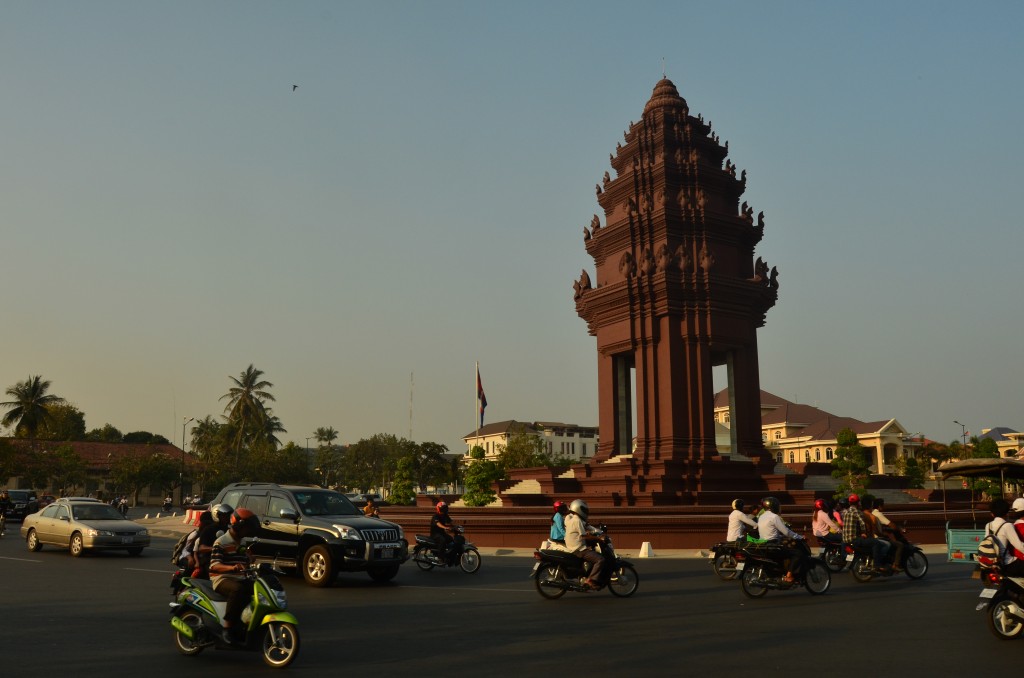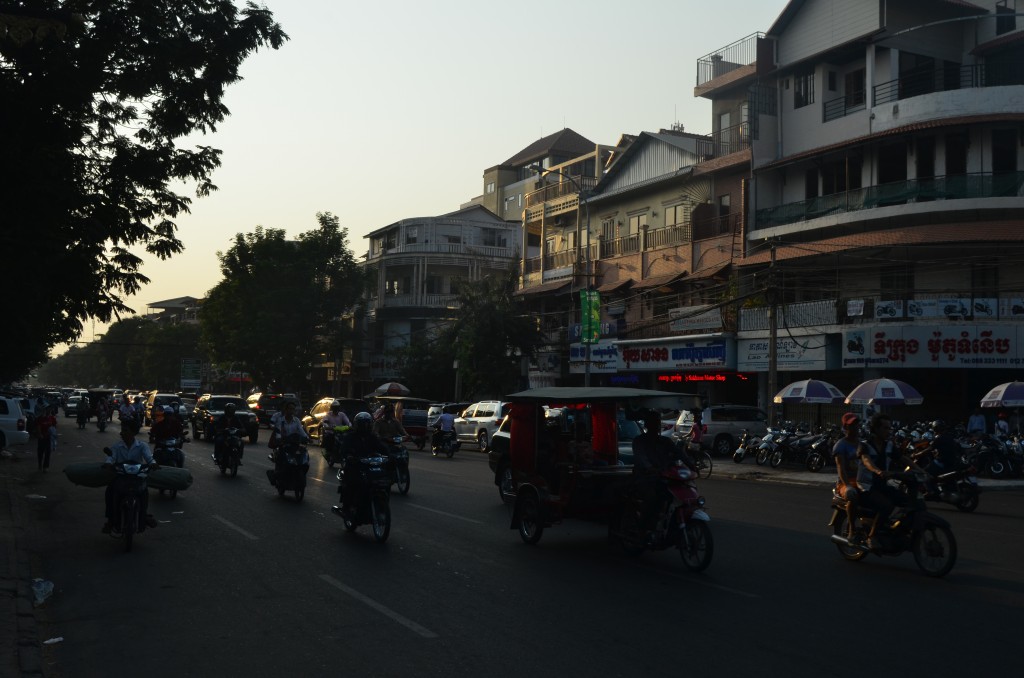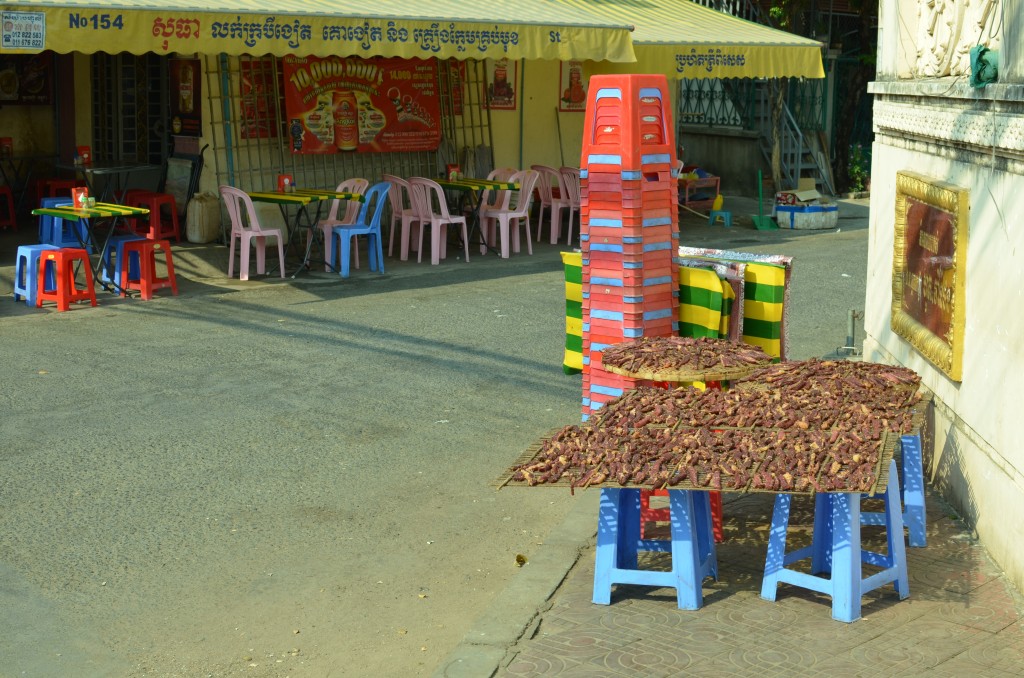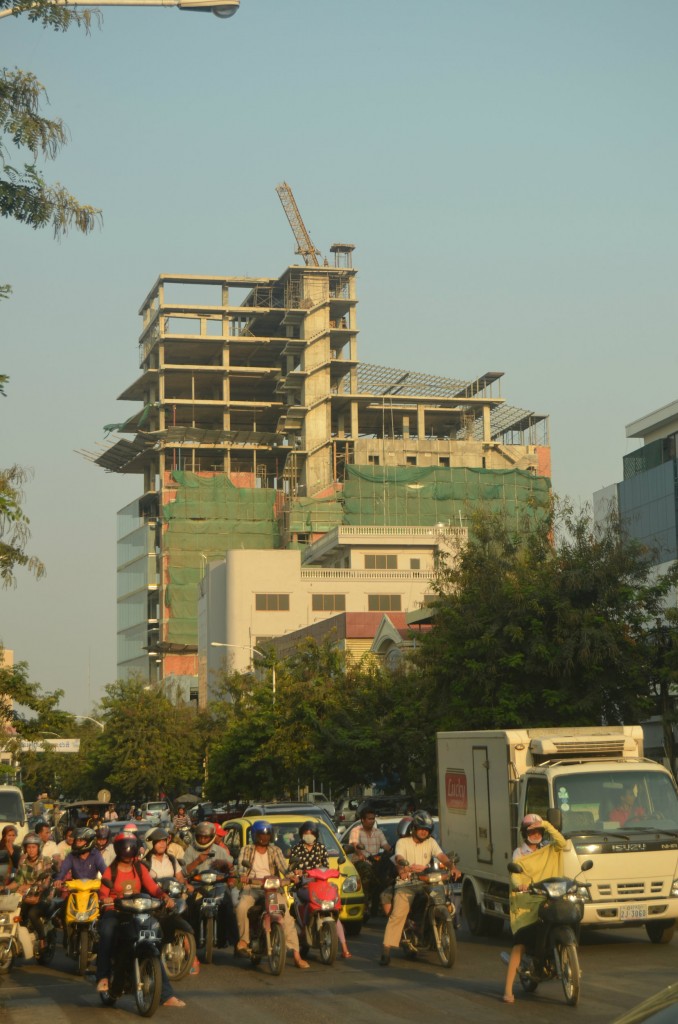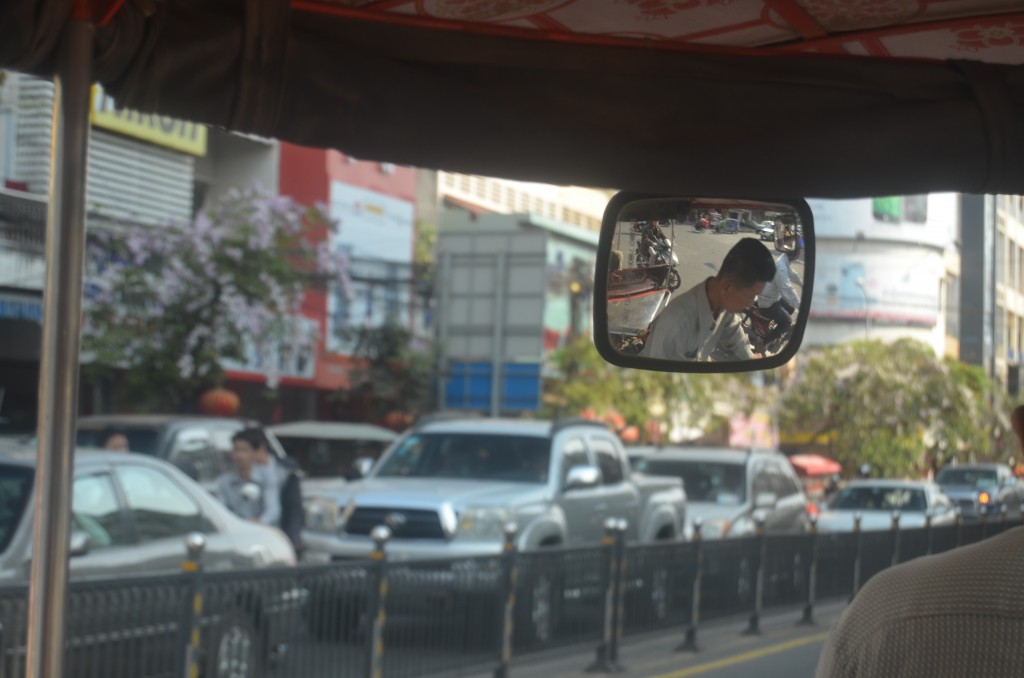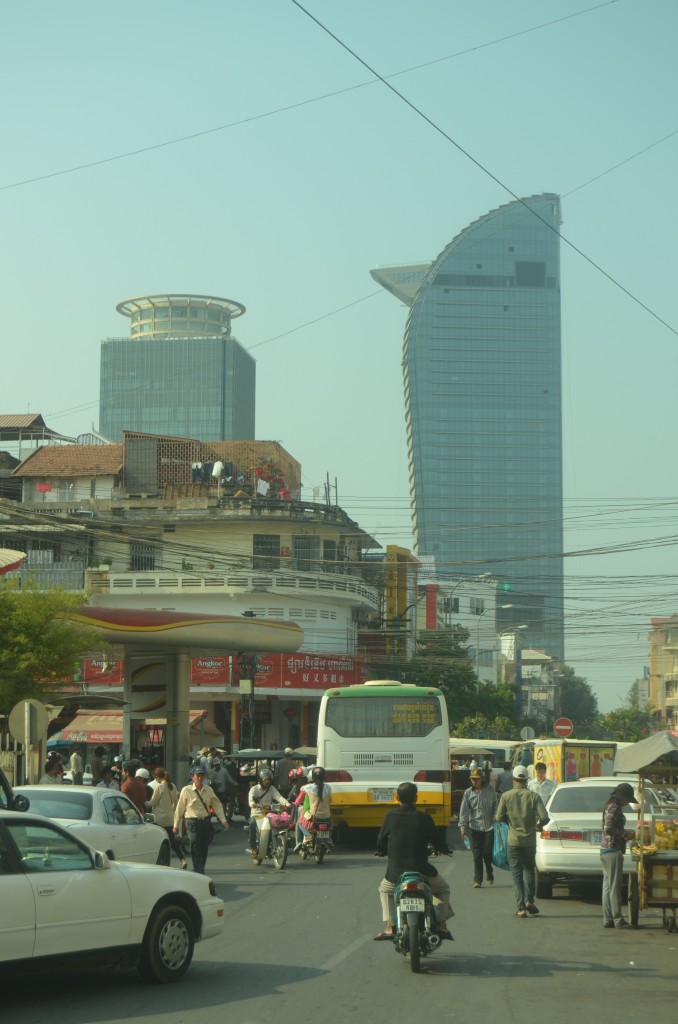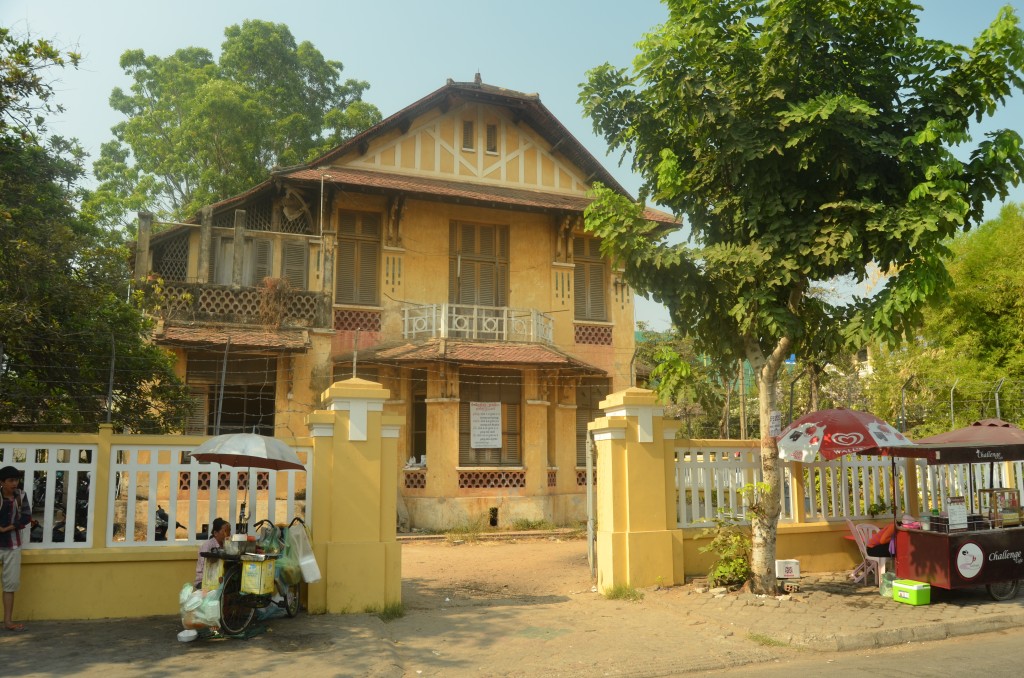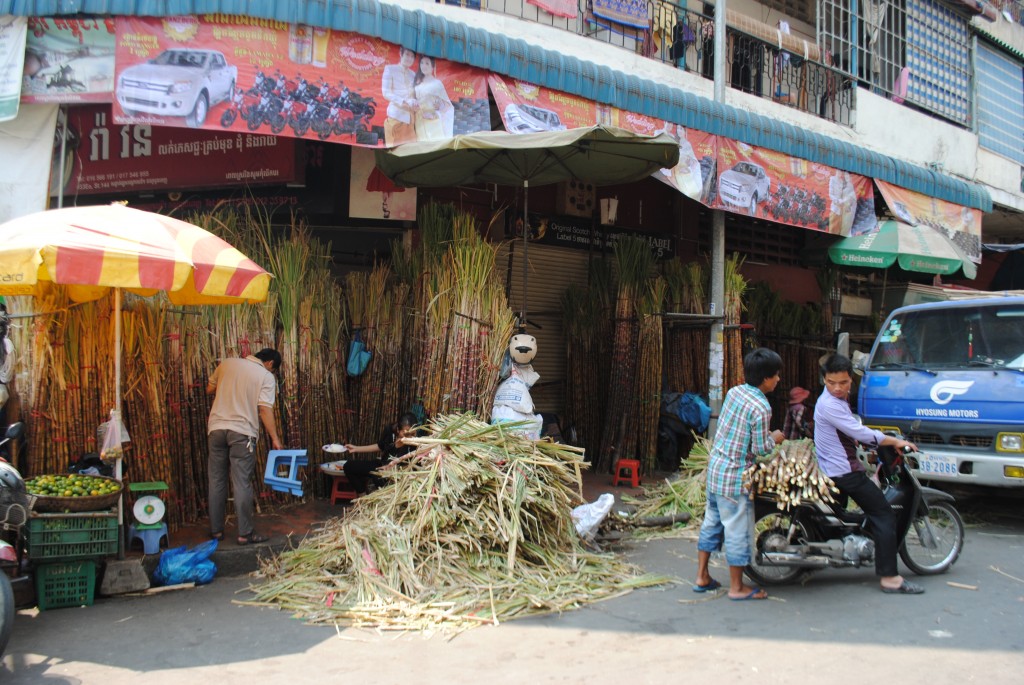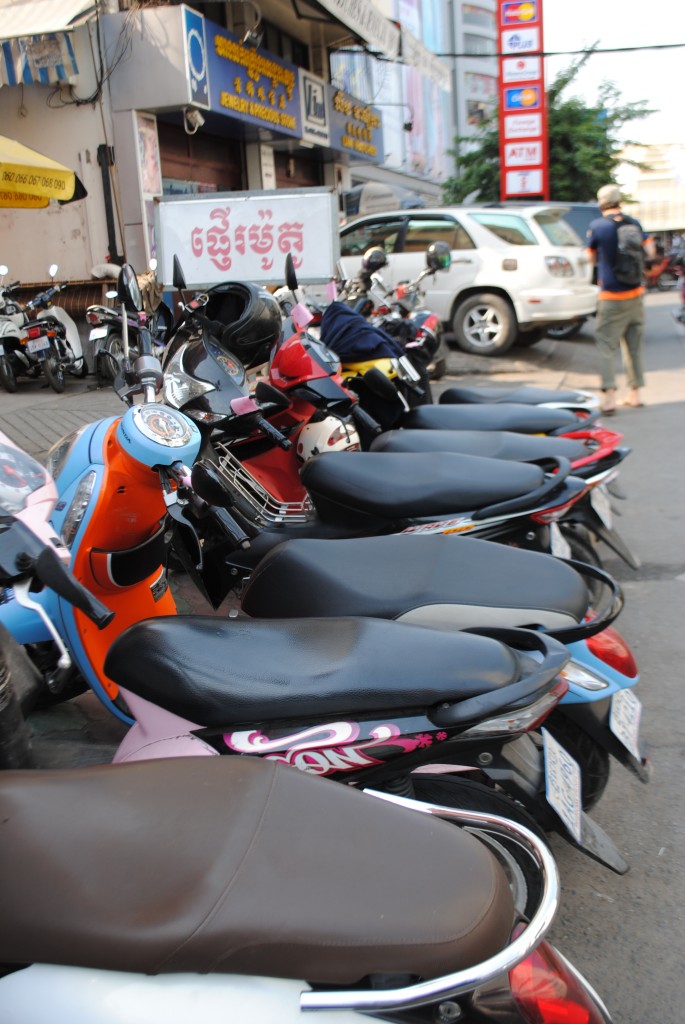After seeing Luang Prabang (last mentioned by Marisa in our most recent post) and after the disappointment of Kampot, we were looking forward to seeing Phnom Penh. The city was once referred to as the Pearl of Asia, one of the ‘loveliest French-built cities in Indochina’ (at least according to Wikipedia). We were expecting something like Luang Prabang mixed with Bangkok, a city with nice colonial architecture but a strong local culture. It also has one of the best stories for the naming of the city that I’ve heard so far. A lady named Penh went to fetch water one day and found five Buddhas floating down the river in a log. She took them ashore and built a hill with a temple on it to house the statues. The wat on the spot is called Wat Phnom, and the city is named Phnom Penh (Penh’s hill).
The other story of Phnom Penh most relevant to our visit isn’t as uplifting. In 1975, the Khmer Rouge rolled into town after the government in power ran out of resources. Almost immediately, they evacuated the residents of the city and forced them out into the fields. The city was more or less abandoned until the Khmer Rouge were ousted and it hasn’t recovered. There are signs of development but the ultimate benefits still seem reserved for the elites who run the government.
Phnom Penh may have been the Pearl of Asia at one point as the architecture still hints at a past grandeur with curved balconies sweeping over street corners, suggestive of a more modern New Orleans (only with layers ruined paint, dust, and general grime). However, it is certainly a pearl no longer, or at least the pearl has become layered with years of grime and decay. To be clear, I don’t think this is a reflection of the Cambodian people. I place the blame squarely on the Khmer Rouge. Our impression of the city was also probably flavored strongly by the fact that Marisa fell ill the entire time we were there. We had four days in Phnom Penh and she was sick for three. She recovered before we had to move on but we ended up missing out on touring the killing fields just outside the city.
Despite Marisa’s infirm status, we stayed fairly busy. There were five things we did in Phnom Penh: The Tuol Sleng prison, a big old wat that contained one of Buddha’s eyebrows, the Royal Palace, the Central Market, and the Russian Market.
Security Prison 21 (S-21, now known as the Tuol Sleng Genocide Museum) is a pretty harrowing place. It is a school that was converted to an interrogation center. About 20 thousand people were imprisoned, interrogated, tortured, and killed here, nearly all of them for false accusations of treason. Horribly enough, it was only one of 150 such centers in the country. The brutality of the place typified the Khmer Rouge and their exceptionally twisted brand of revolution.
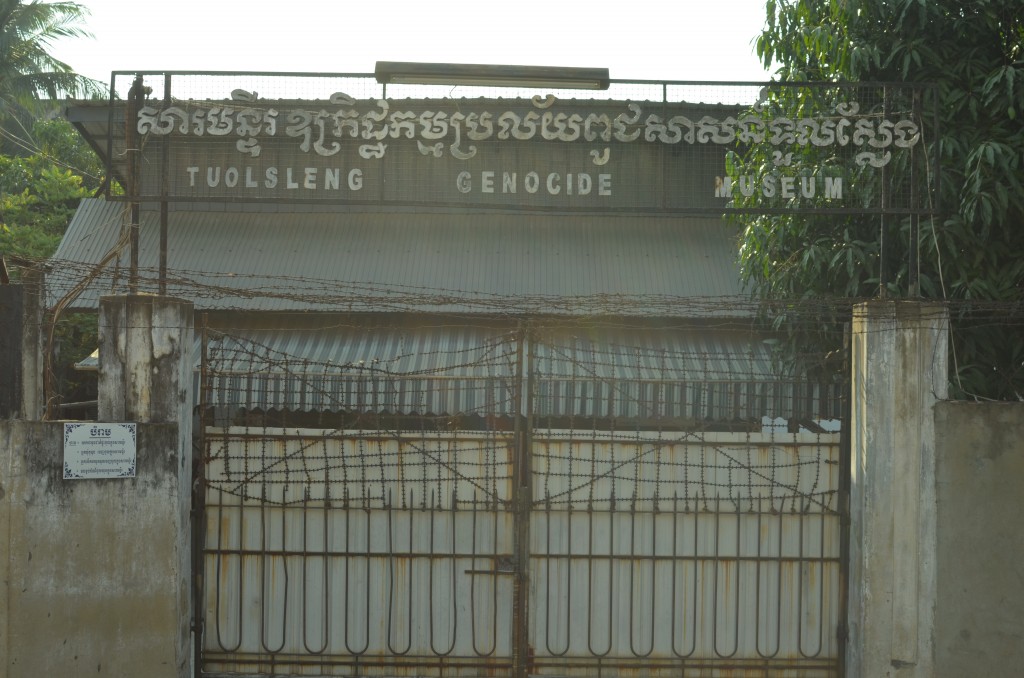
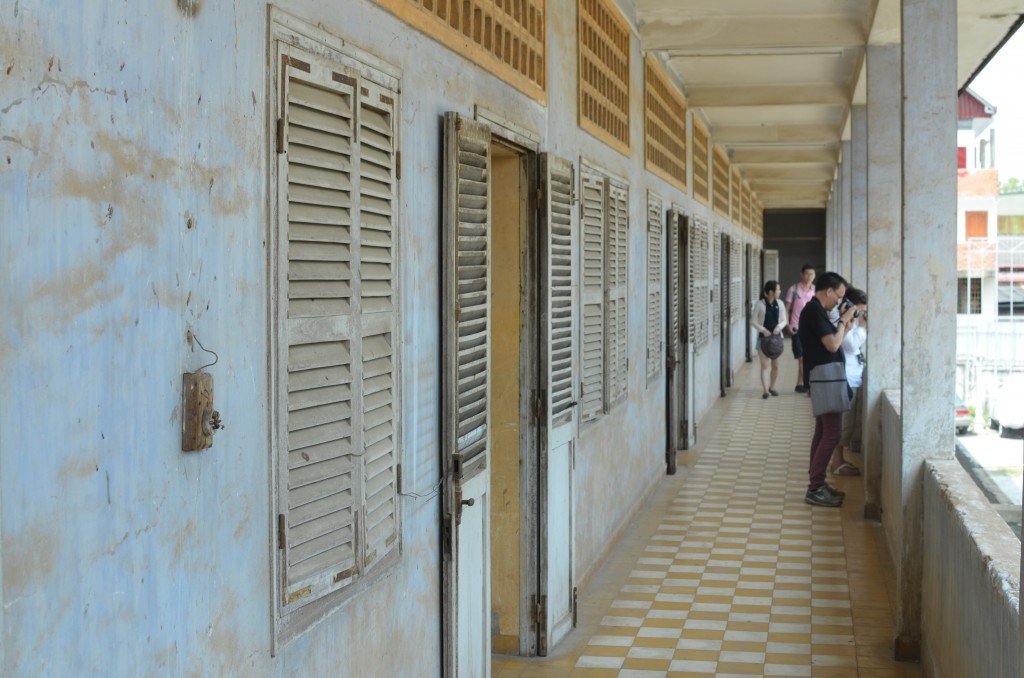
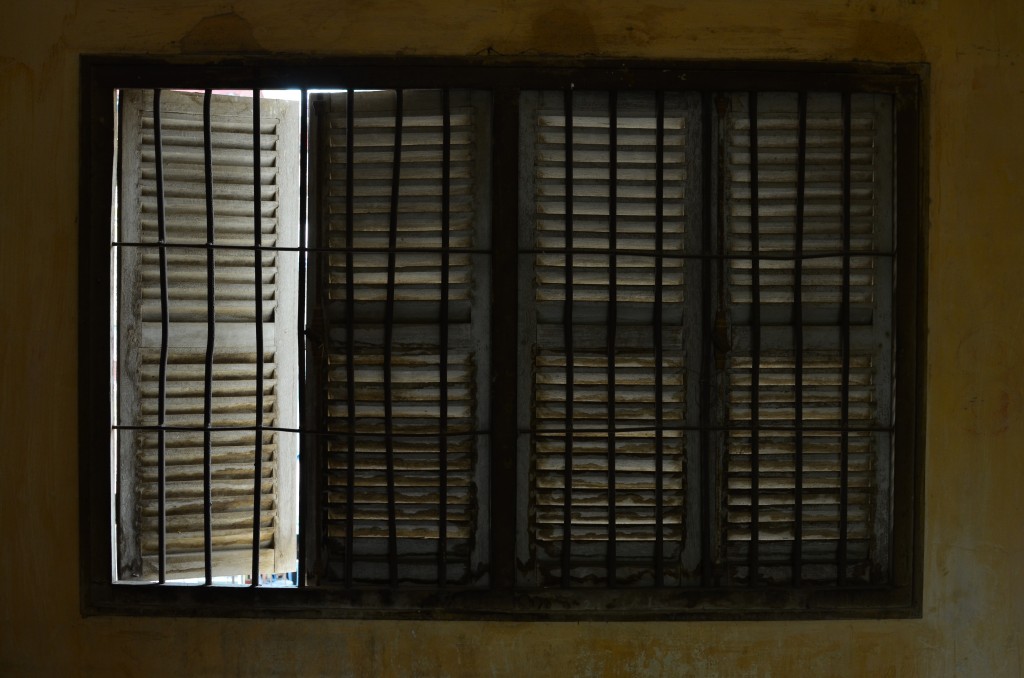
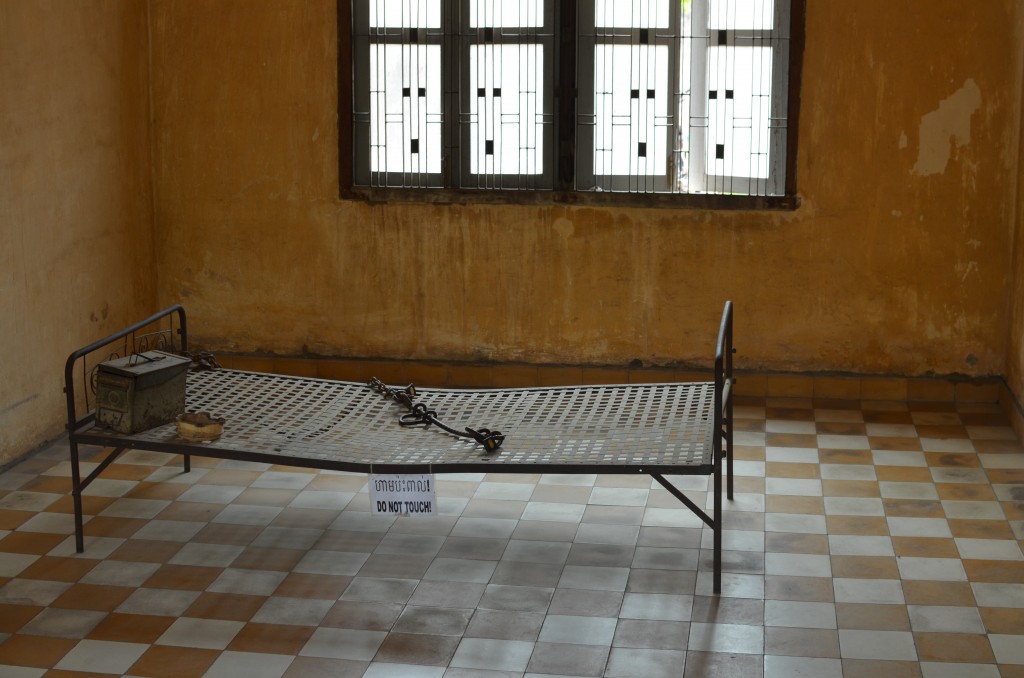
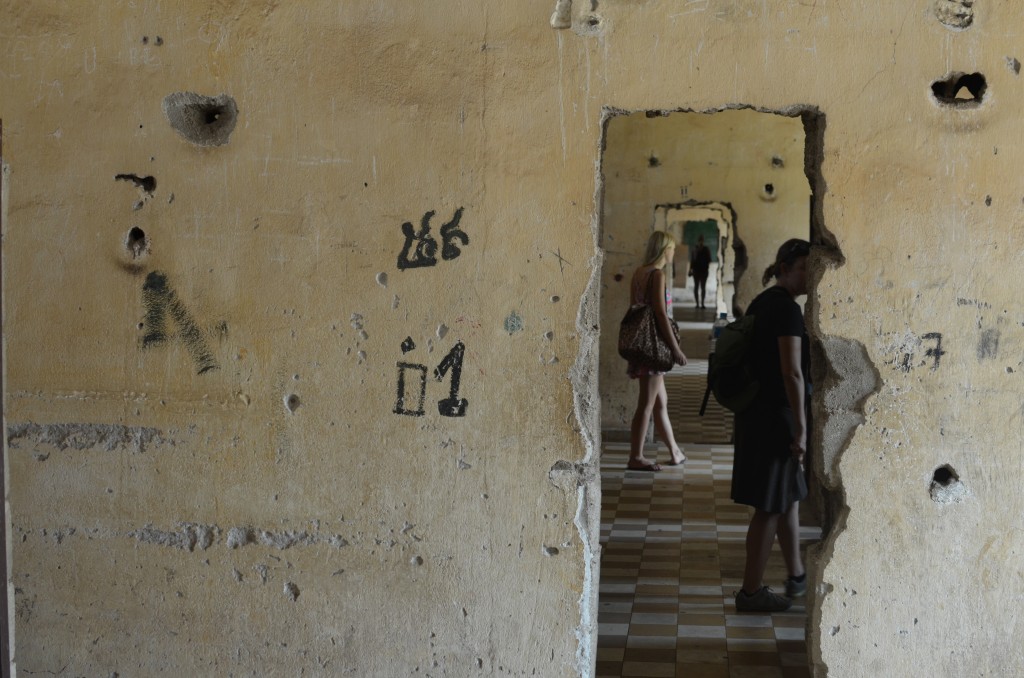
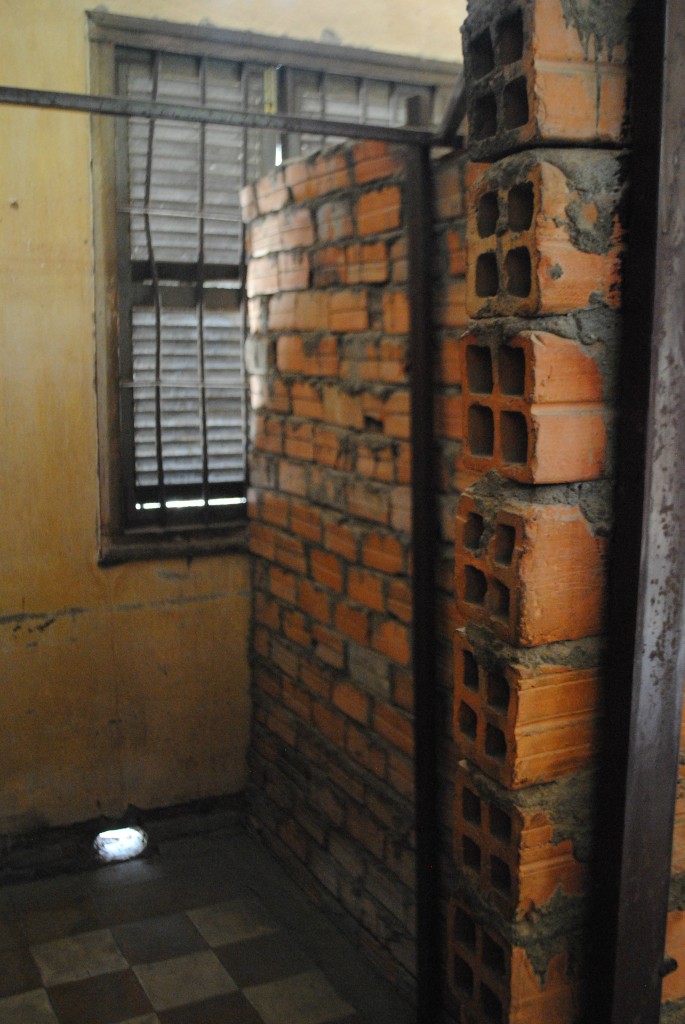
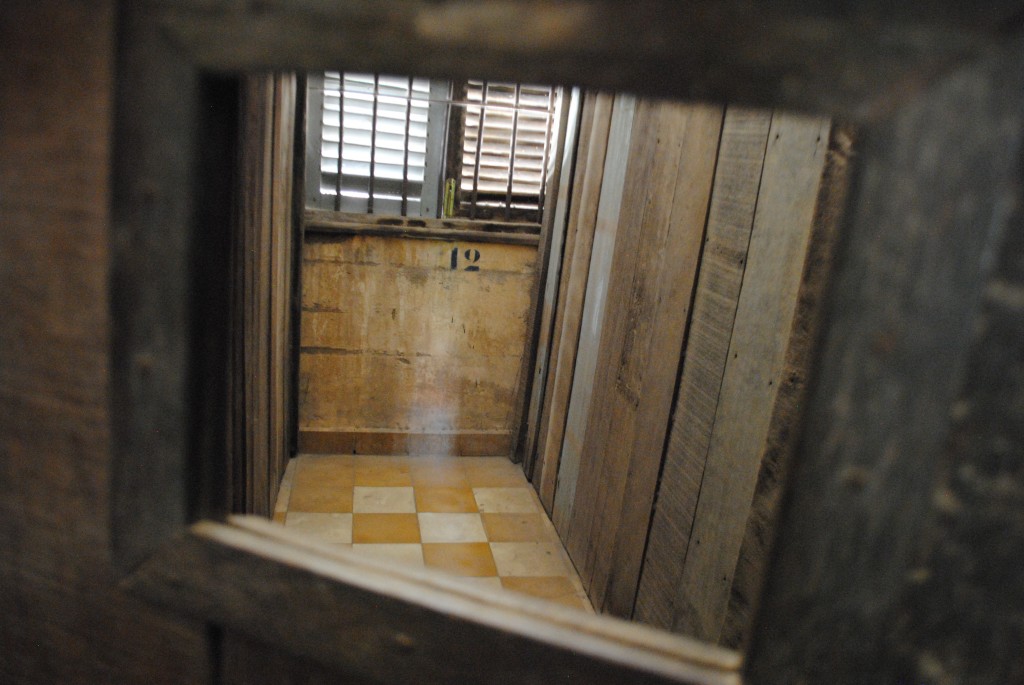
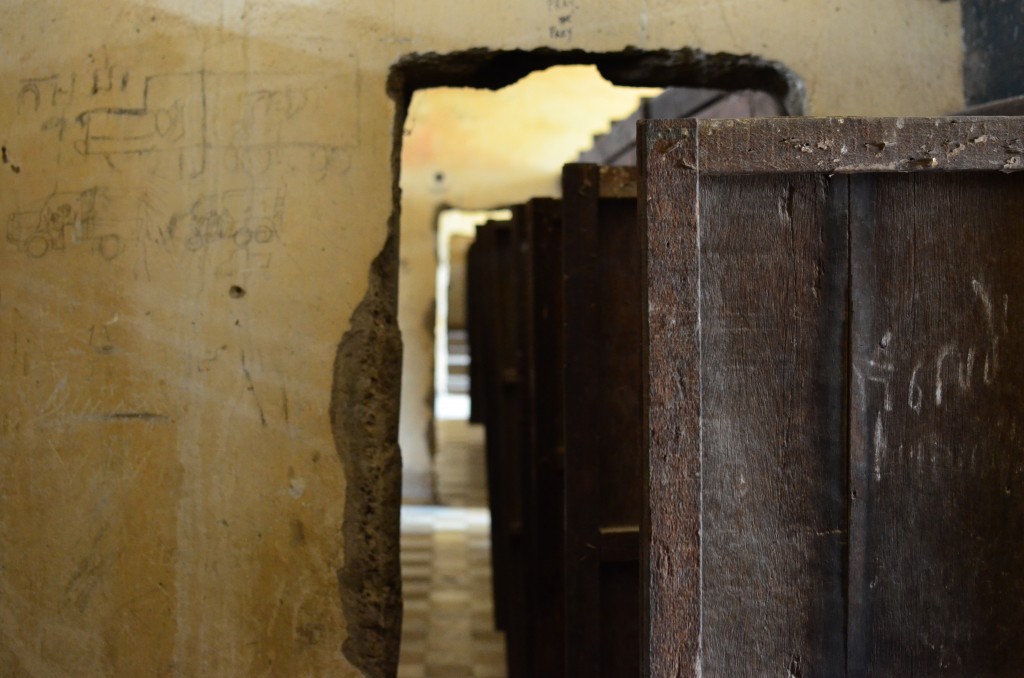
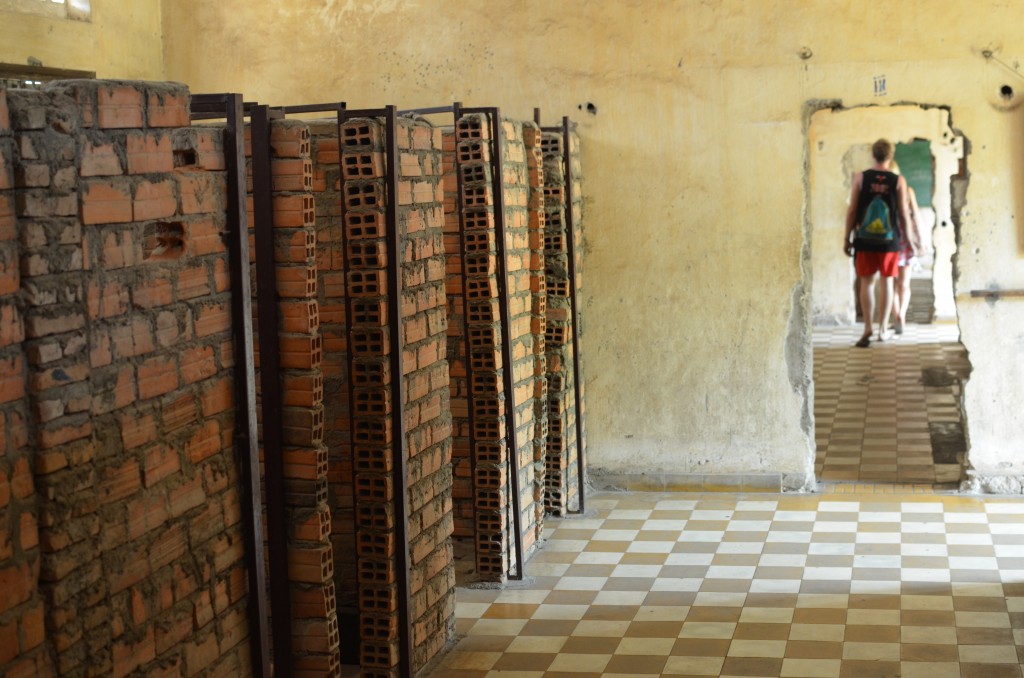
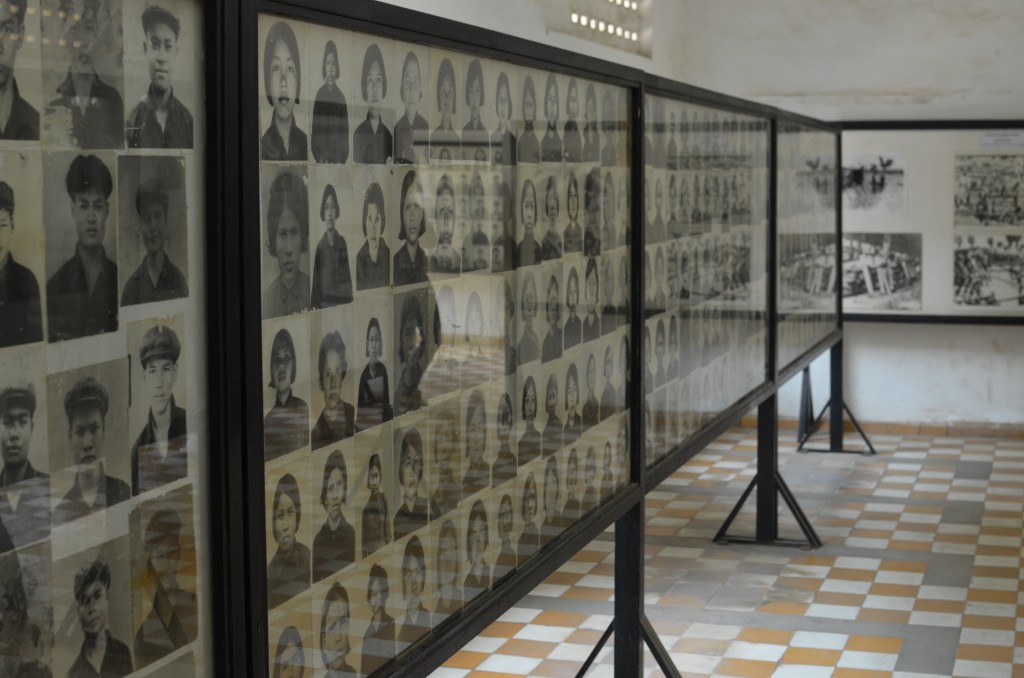
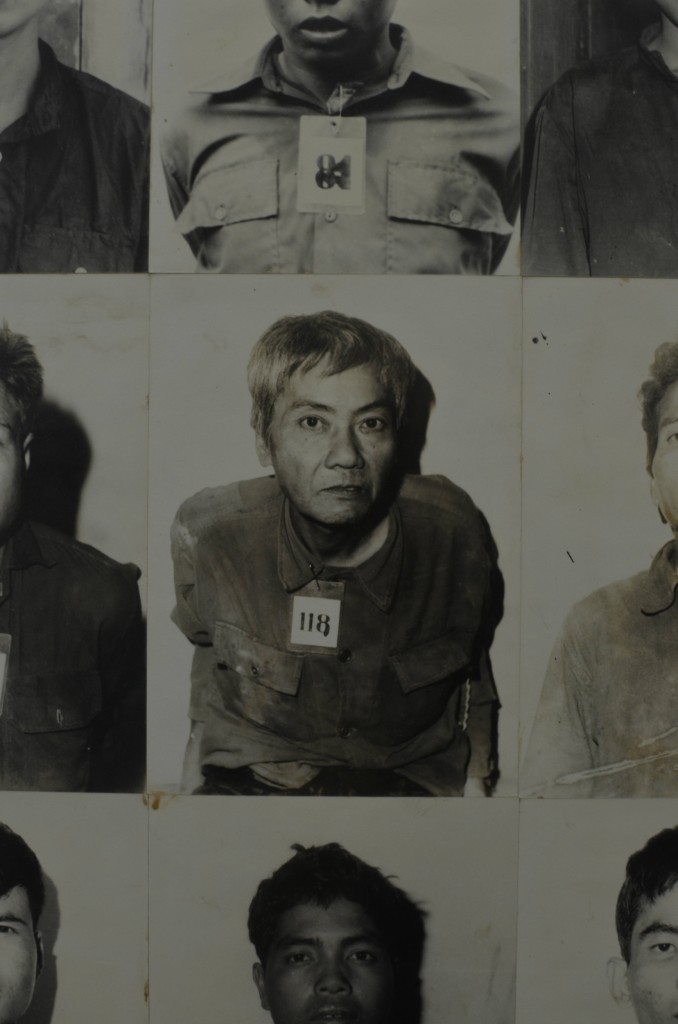
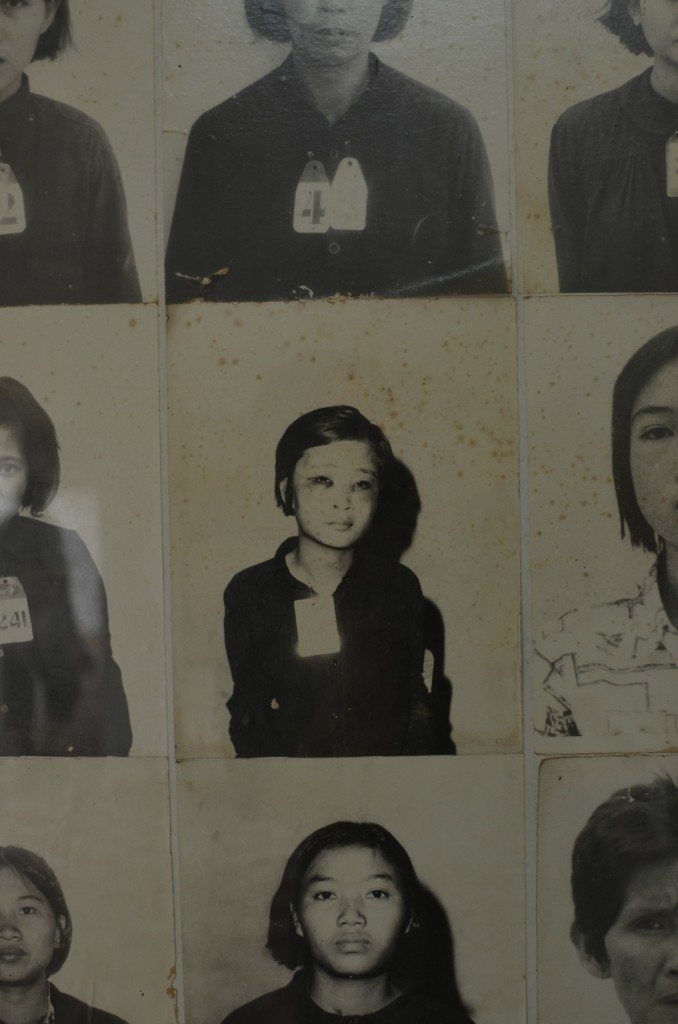
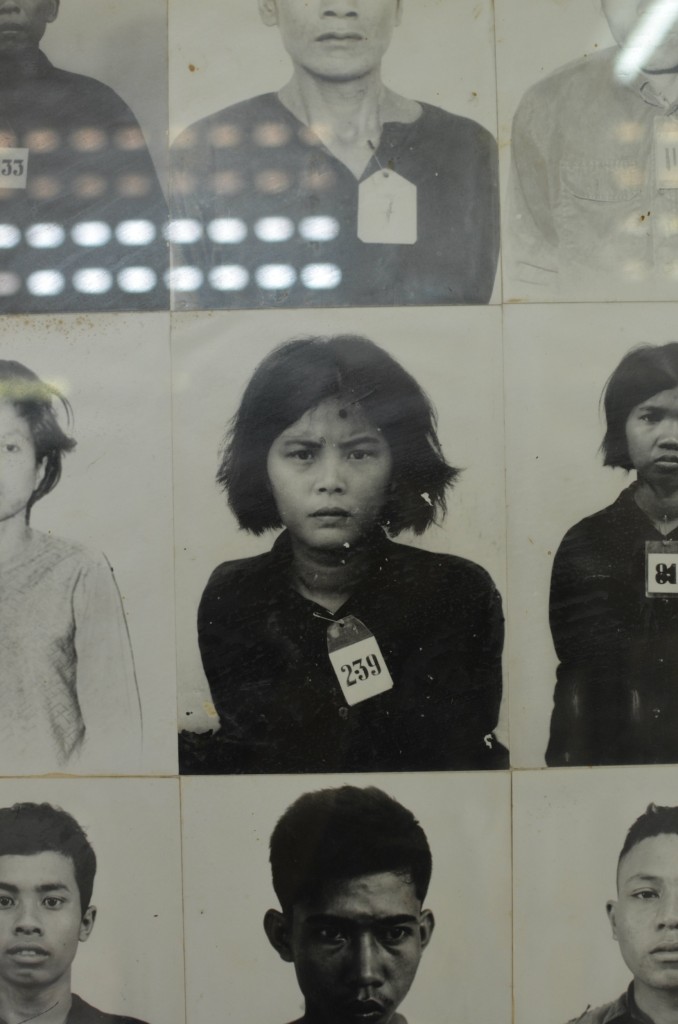
The Khmer Rouge were, in relative terms, the most brutal and bloodthirsty regime in modern history. They were responsible for the deaths of 2 million over 3 years, or 25% of the country’s population. These deaths were the result of Pol Pot and his comrades’ obsession with achieving ‘full revolution’ before any of their fellow SE Asian Communists. They were also resentful of the aid received from Vietnam and wanted to prove their brand of revolution was superior. Hence, the forced depopulation of the cities and the extreme prejudice in rooting out counter-revolutionary actors (real or imagined).
On a more joyful note, we visited the Wat Ounalom, the center of Cambodian Buddhism. It survived the Khmer Rouge regime and has slowly become revitalized. It’s a complex of a couple dozen buildings. One of these is a stupa which is said to house one of Buddha’s eyebrows! We didn’t get to see the actual relic, which is hidden away inside one of the statues in the stupa, but we did get a blessing from man who works in there.
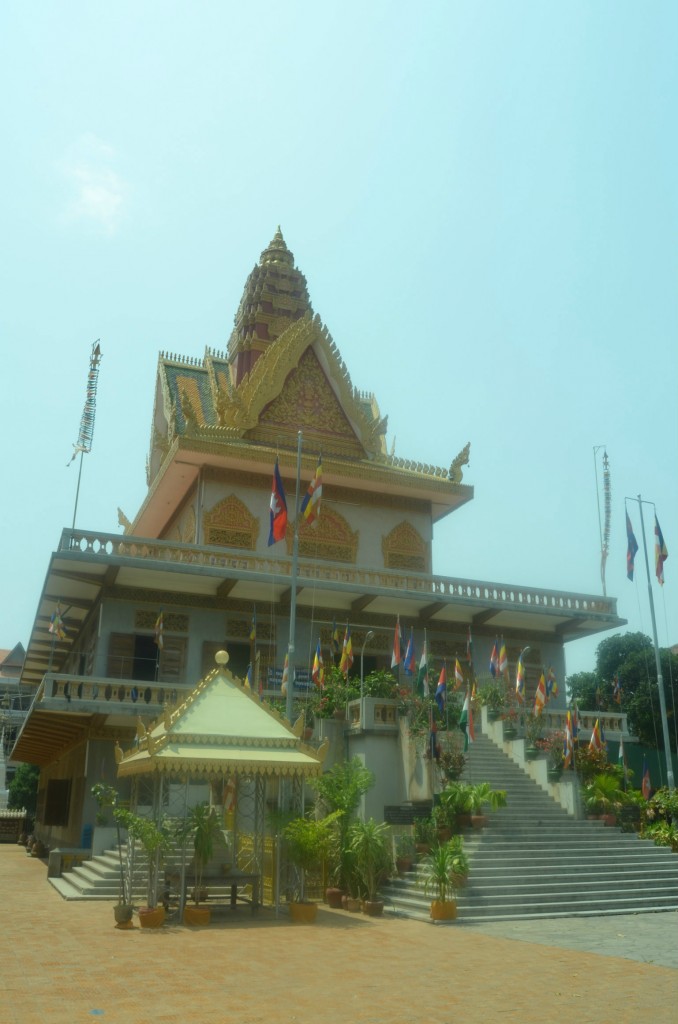
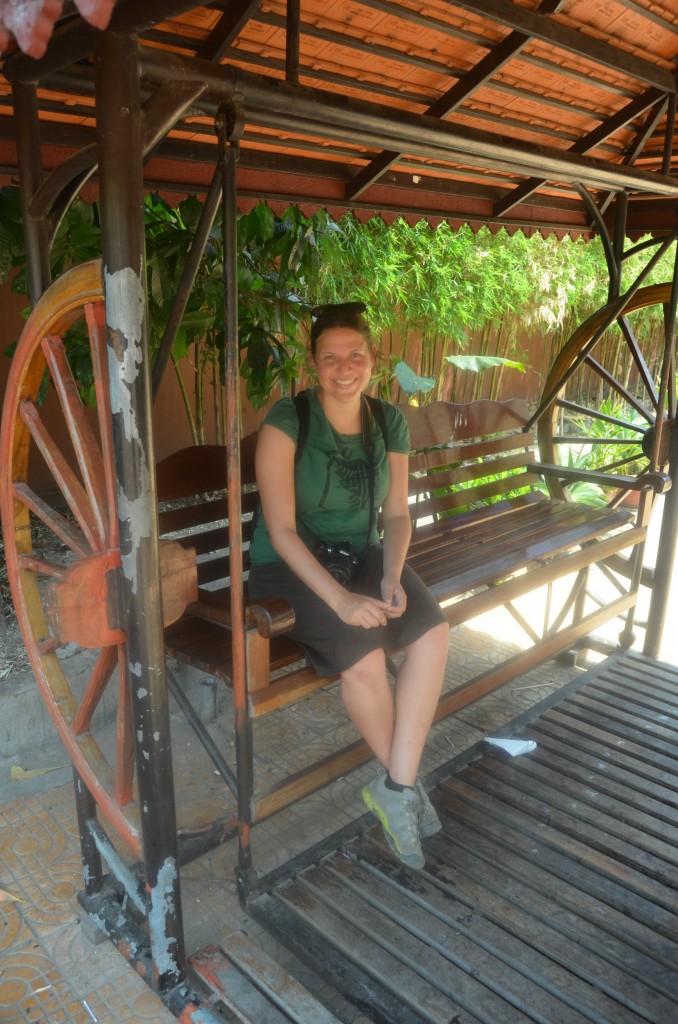
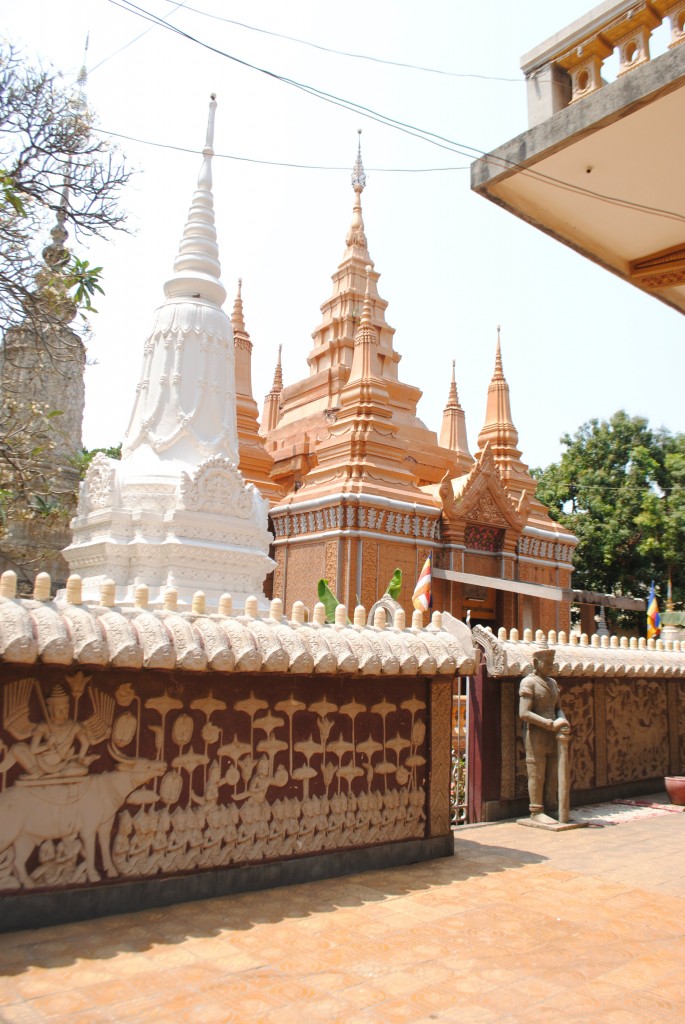
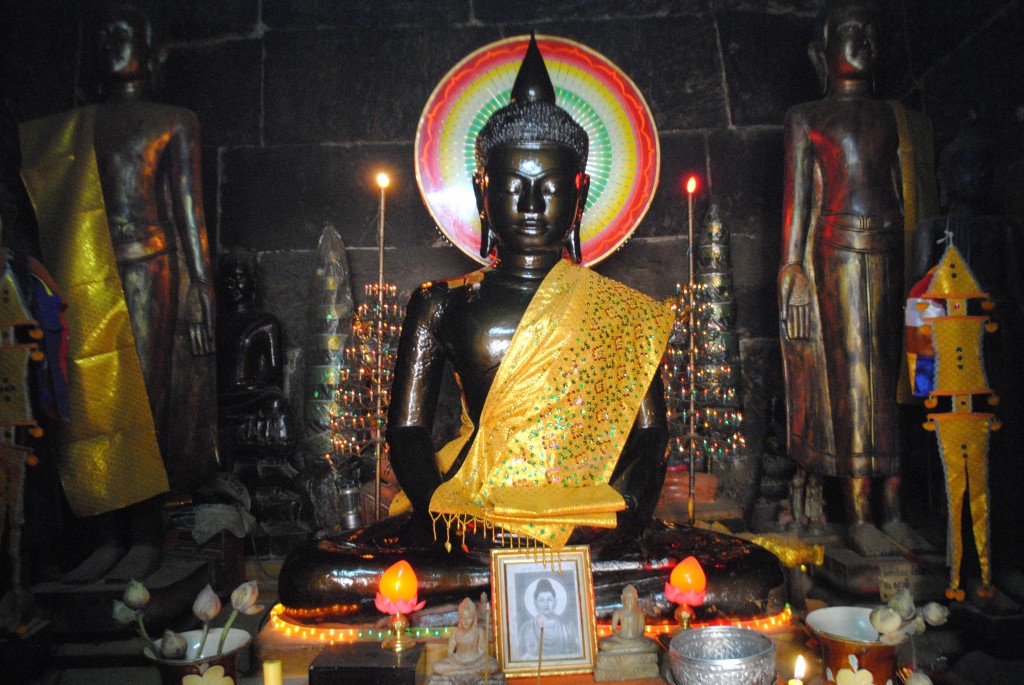
The Central Market was an interesting site to visit. From the pictures it looked like an early-20th-century World’s Fair exhibit hall teleported into the middle of the Deep Dark Orient. It was built on the site of a drained lake and completed in 1937. After enduring decades of decay, it was renovated between 2009 and 2011 on the dime of the French government. It is certainly an impressive building but it lacks the claustrophobic charm of other Asian markets (the Chatuchak Market in Bangkok being the best example of that). We had fun wandering around and I found an awesome scarf.
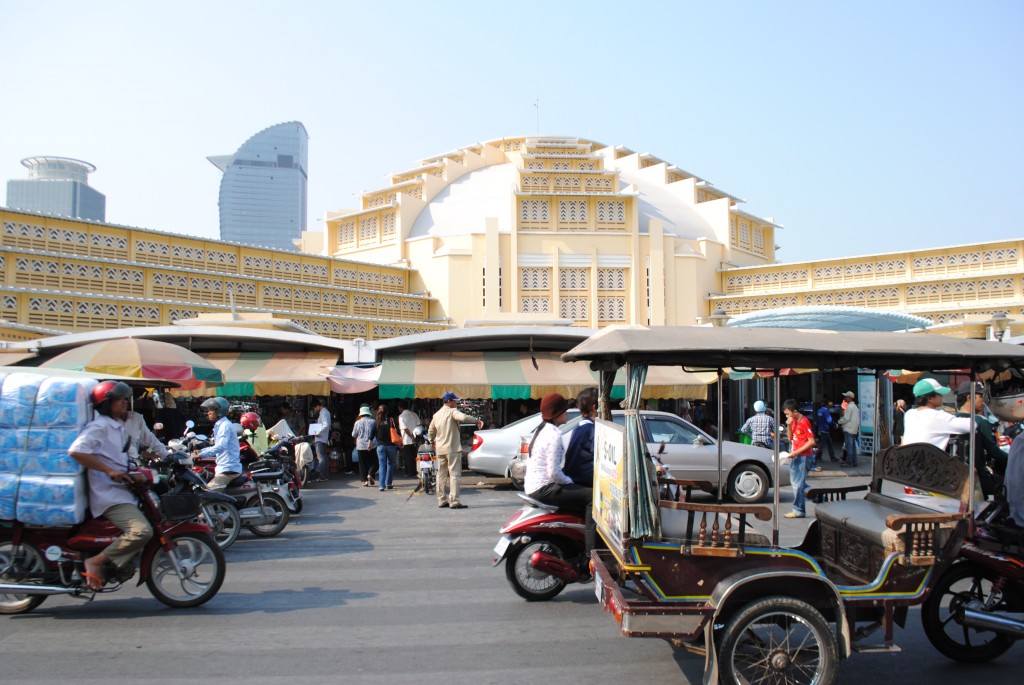
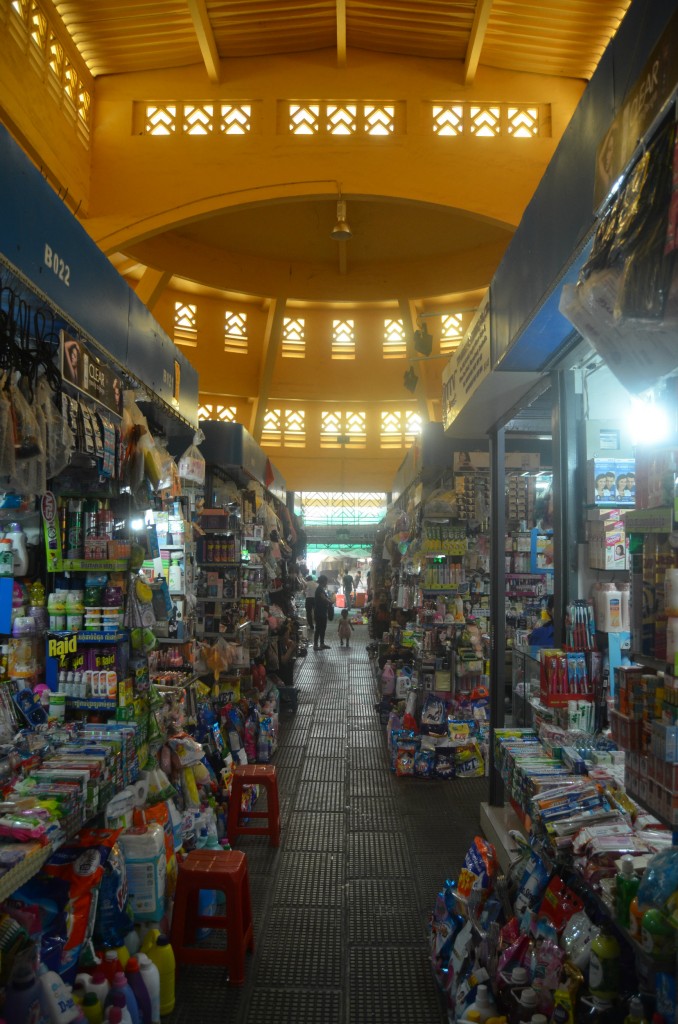
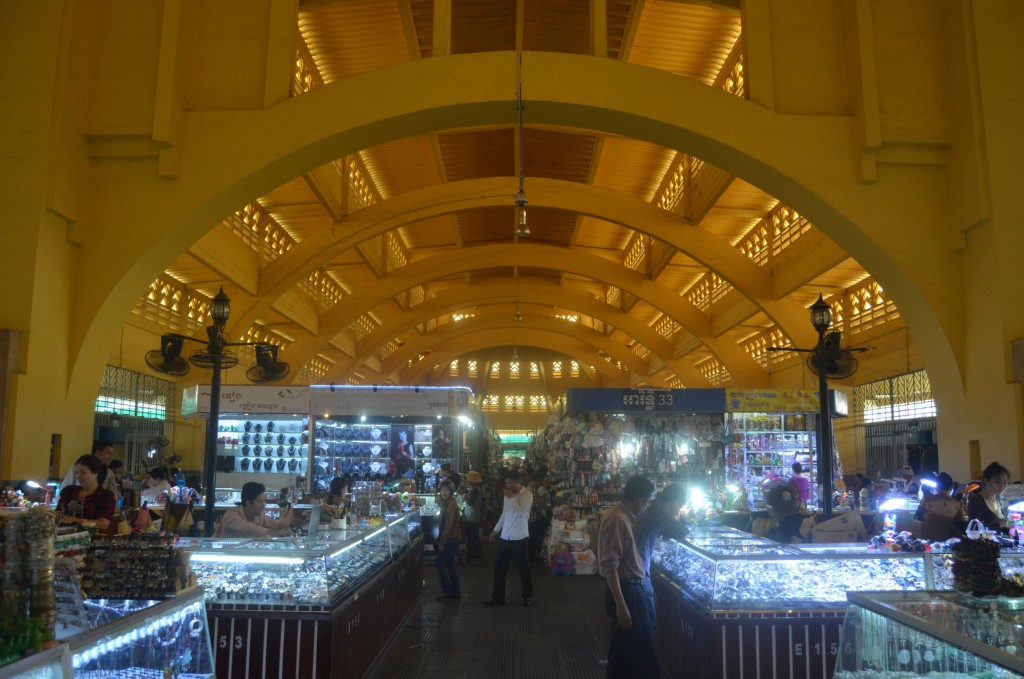
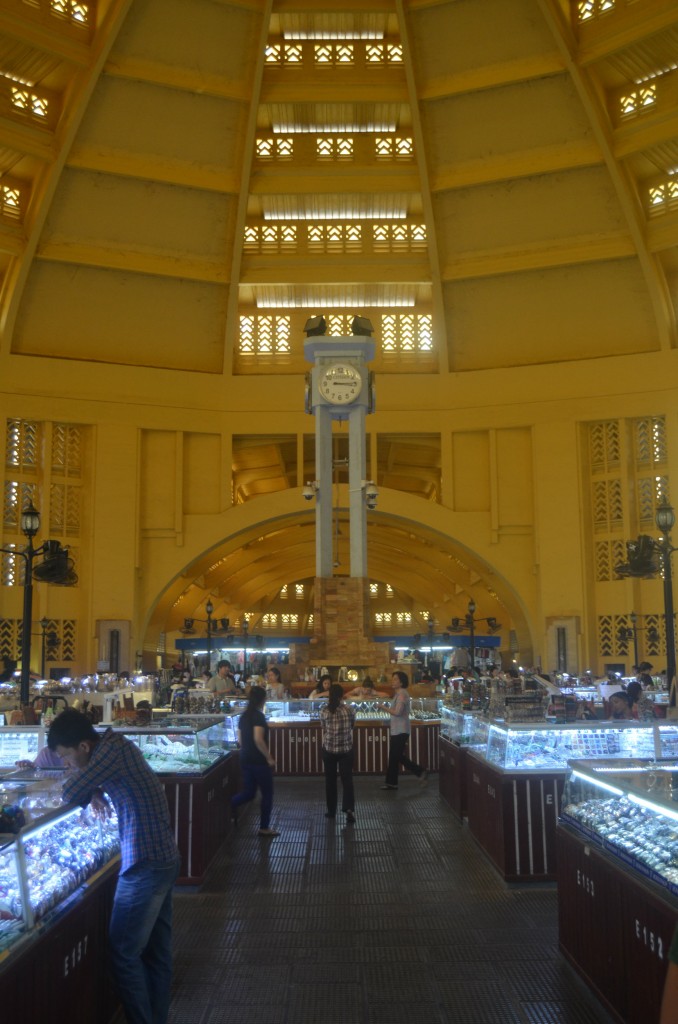
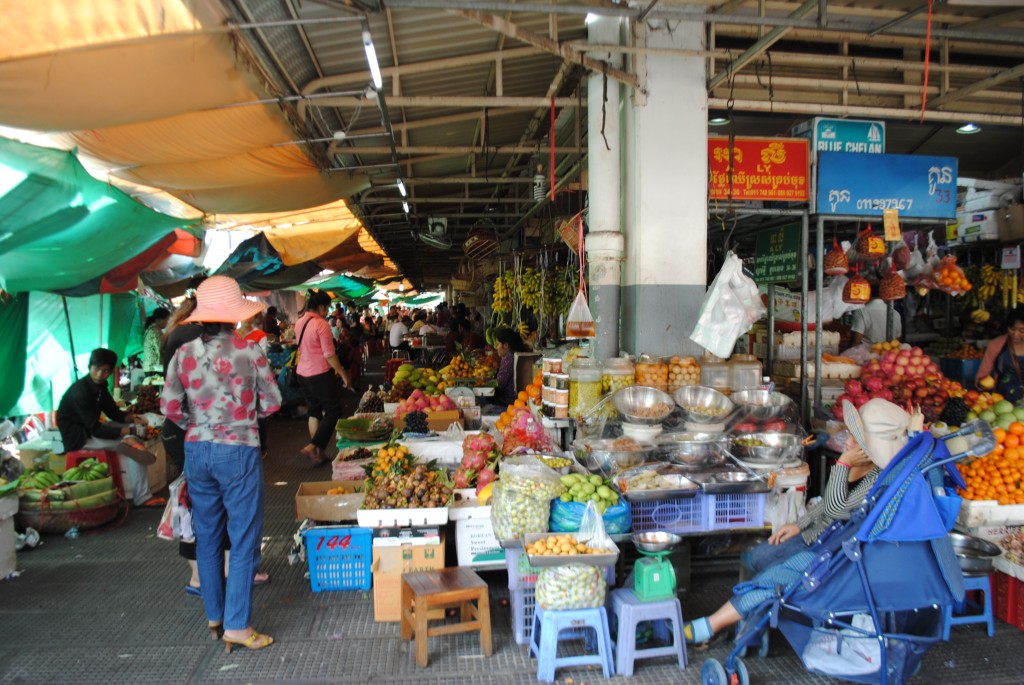
Marisa was out of commission for the next couple days with a stomach bug. We both got sick only once each on the trip, me in Varanasi and she in Phnom Penh. We considered this to be a minor miracle given the places we had been spending time in. Since Marisa was bed-ridden and TV on Cambodia is uneven entertainment at best, I elected to wander around a bit on my own. High on my list of ‘stuff to see in Asia’ are the markets. I’ve always had romantic ideas in my head about markets and what goes on in them. The way they work feels like the antithesis of many Western ways of doing things: bartering, local produce, simple goods, goods repair, jostling and hustling, etc etc. Seeing each city’s markets was something I wanted to make sure I did and Phnom Penh has a particularly famous one: the Russian Market, so called because of its popularity with Russian tourists in 1980s. I arrived at the end of the day, just in time to watch everyone pack up their stuff. It was a little disappointing but it was still cool to walk around a bit. It felt a lot like Chatuchak but much smaller. Advance apologies for the dark pics…
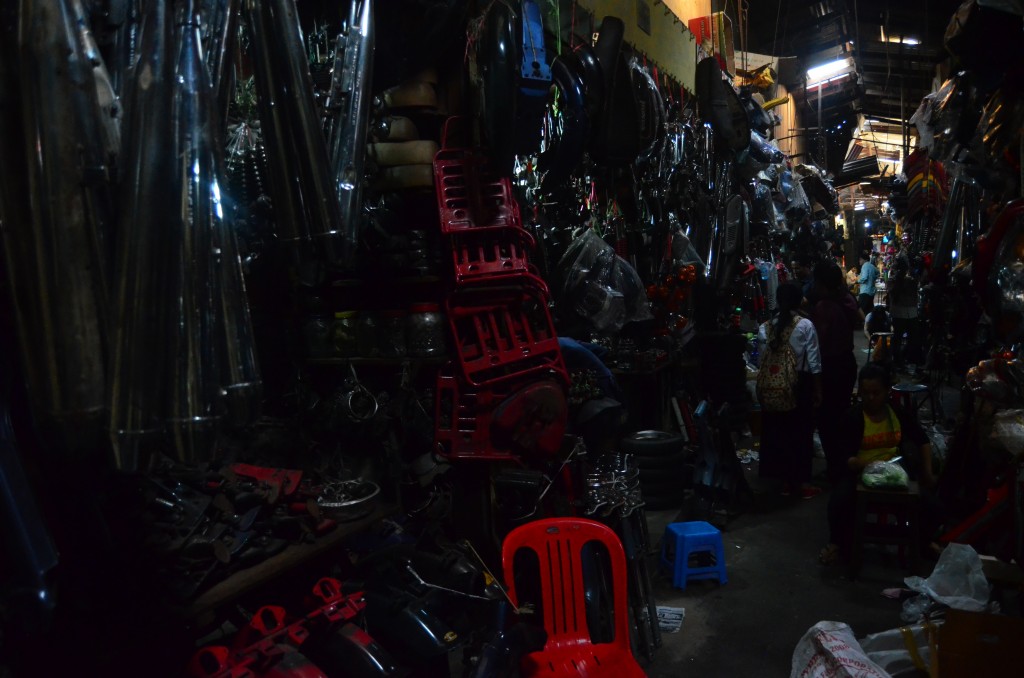
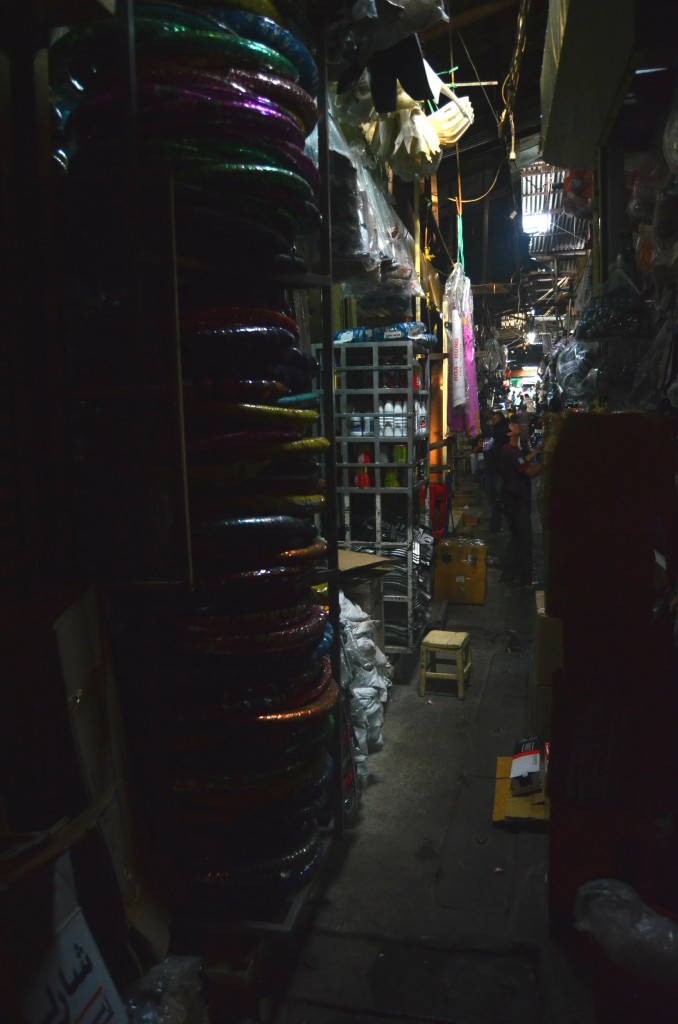
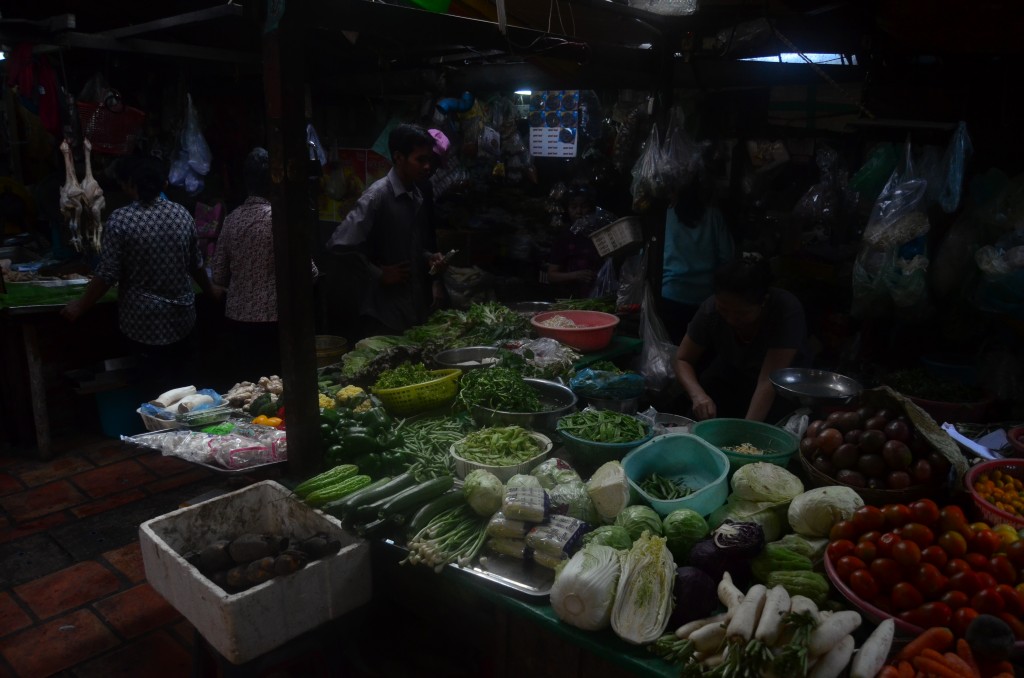
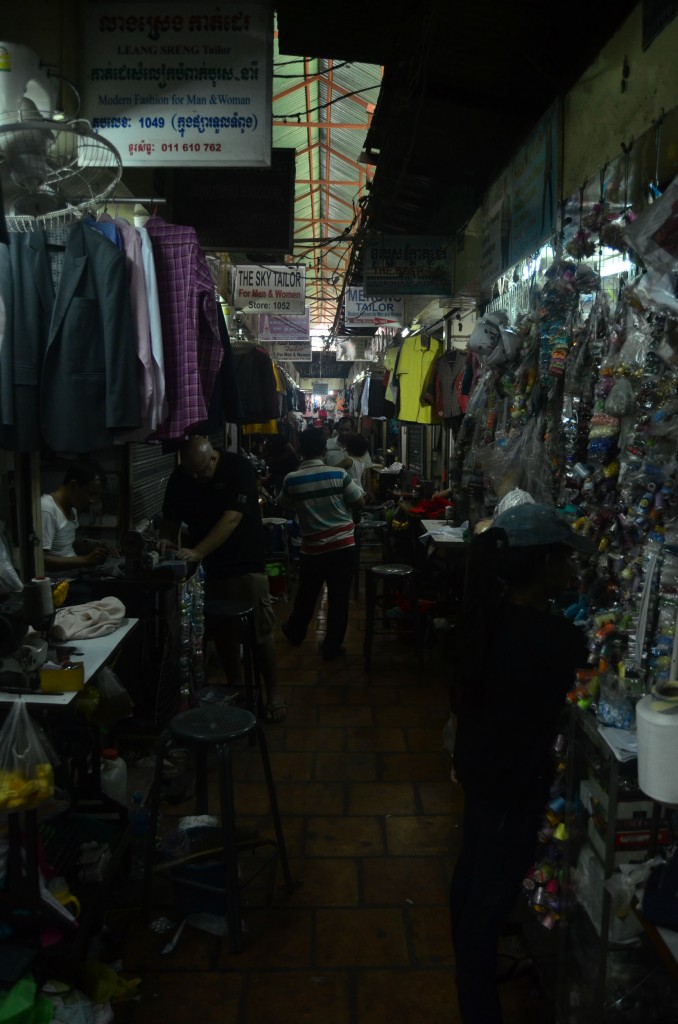
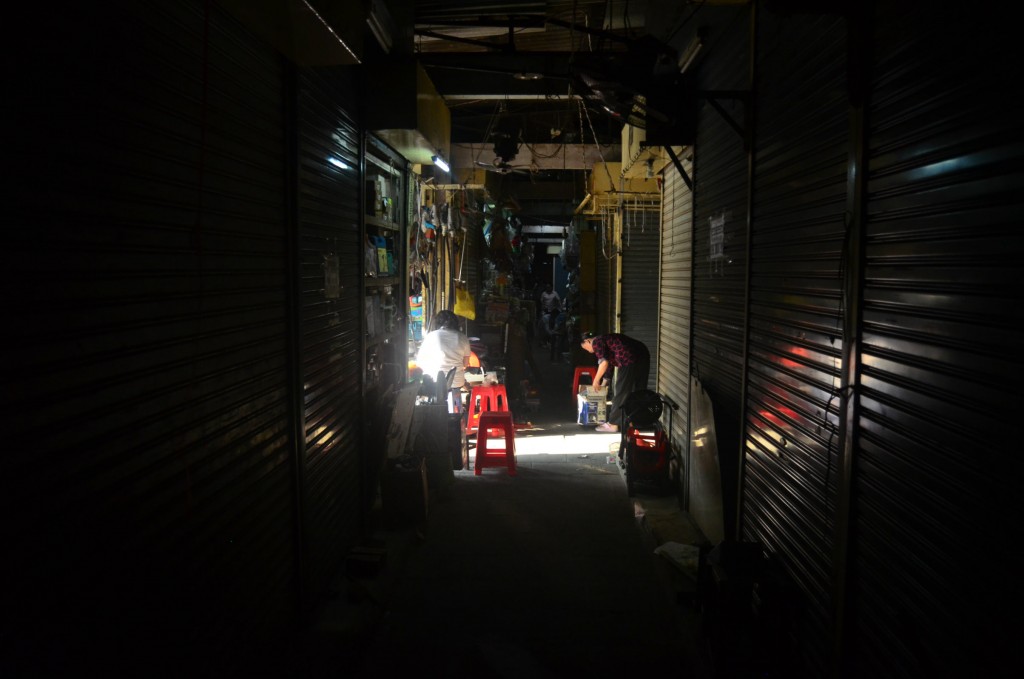
The next day I walked over to the Royal Palace/Silver Pagoda complex to see what that was all about. Phnom Penh has only been the capital of Cambodia since 1866, a recent date in comparison to the age of the Khmer civilization. The Royal Palace complex lost a lot of buildings during the Khmer Rouge regime but what’s left is suitably magnificent. There are also a lot of similarities to the Palace and Pagoda in Bangkok. The Khmer influence on Thai architecture is very clear. Or is it the Thai influence on Khmer architecture? Either way, it’s very beautiful.
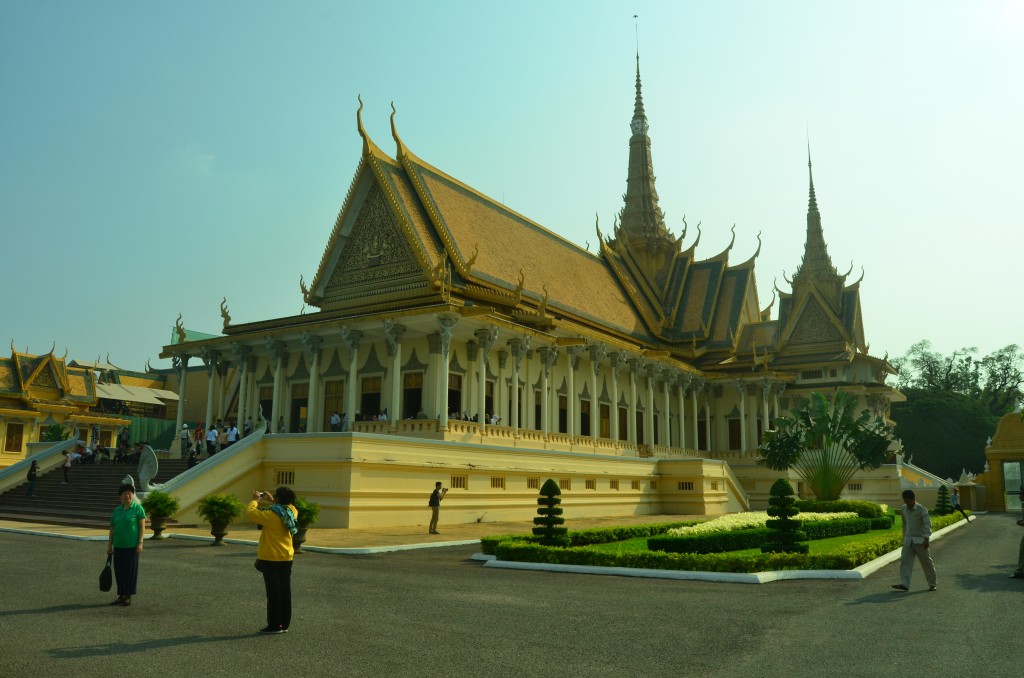
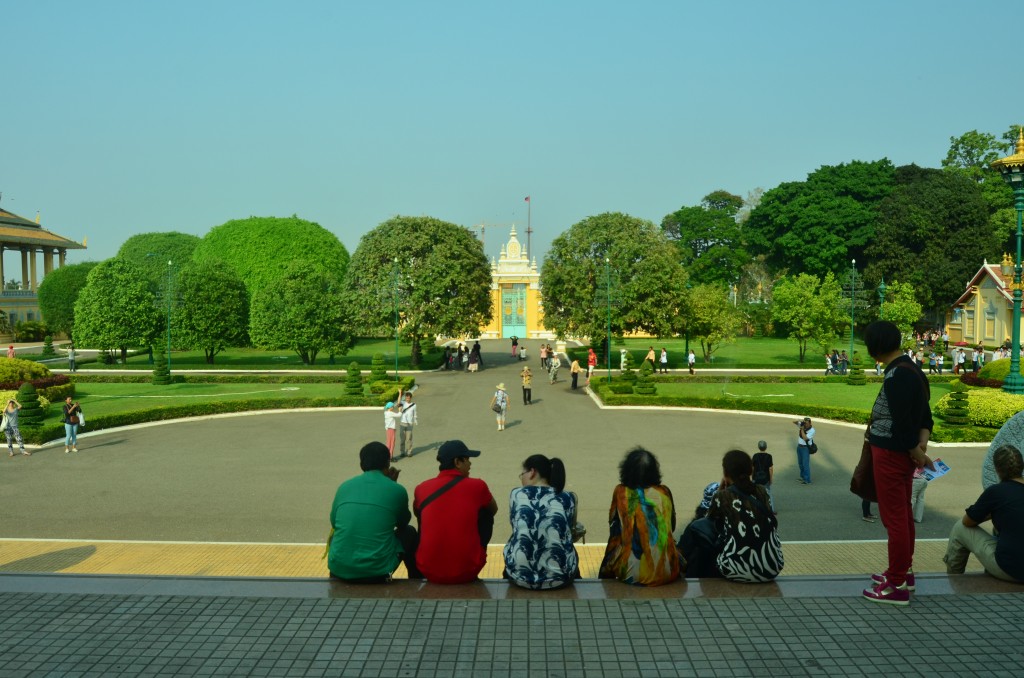
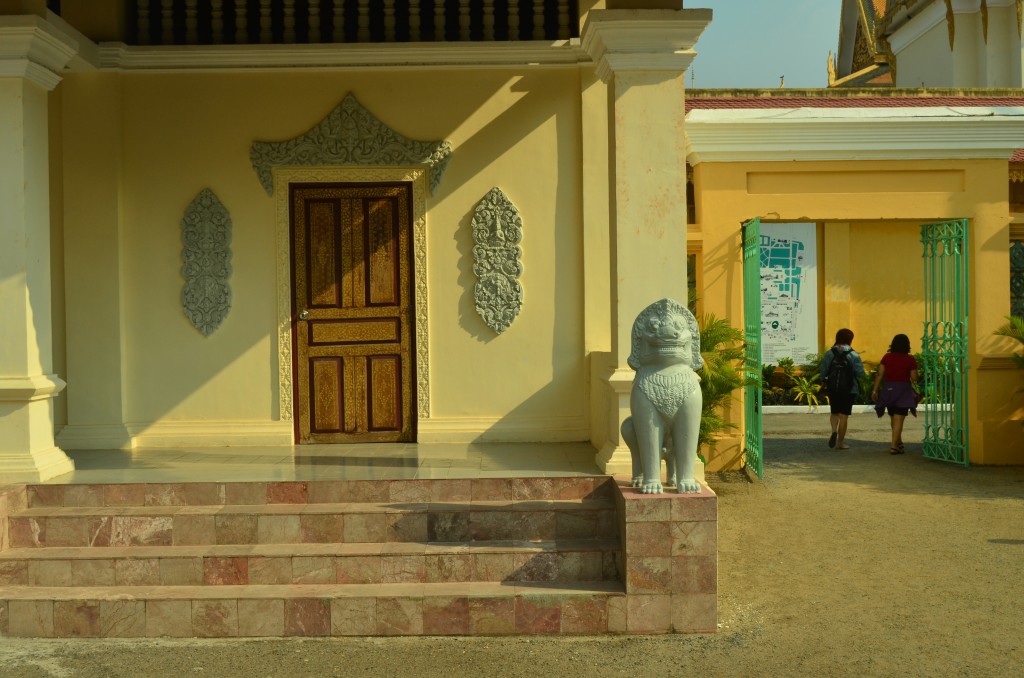
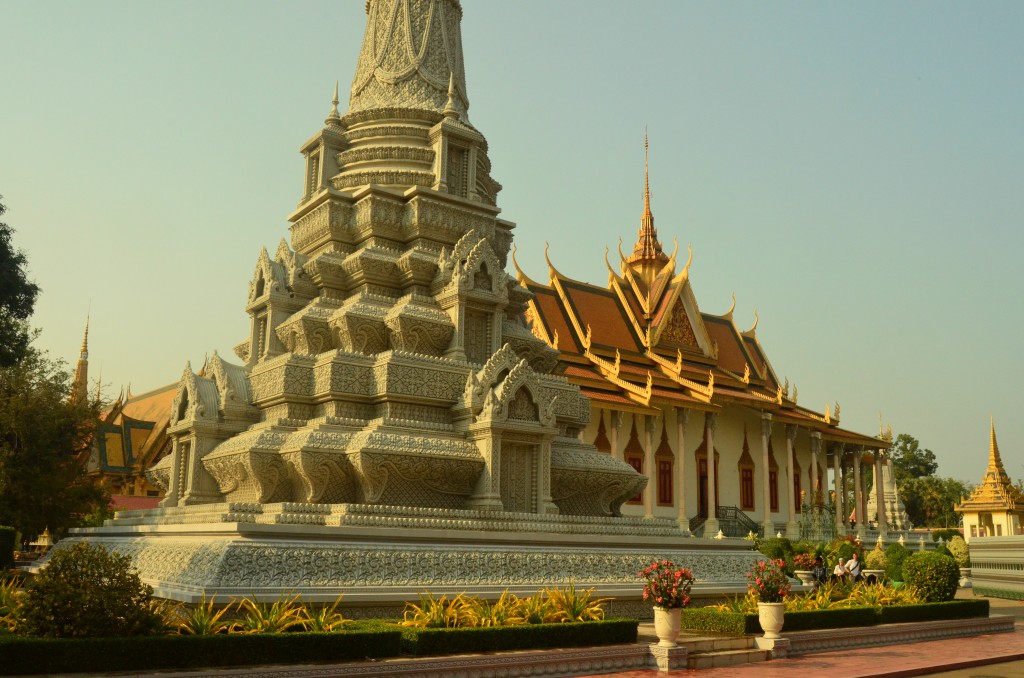
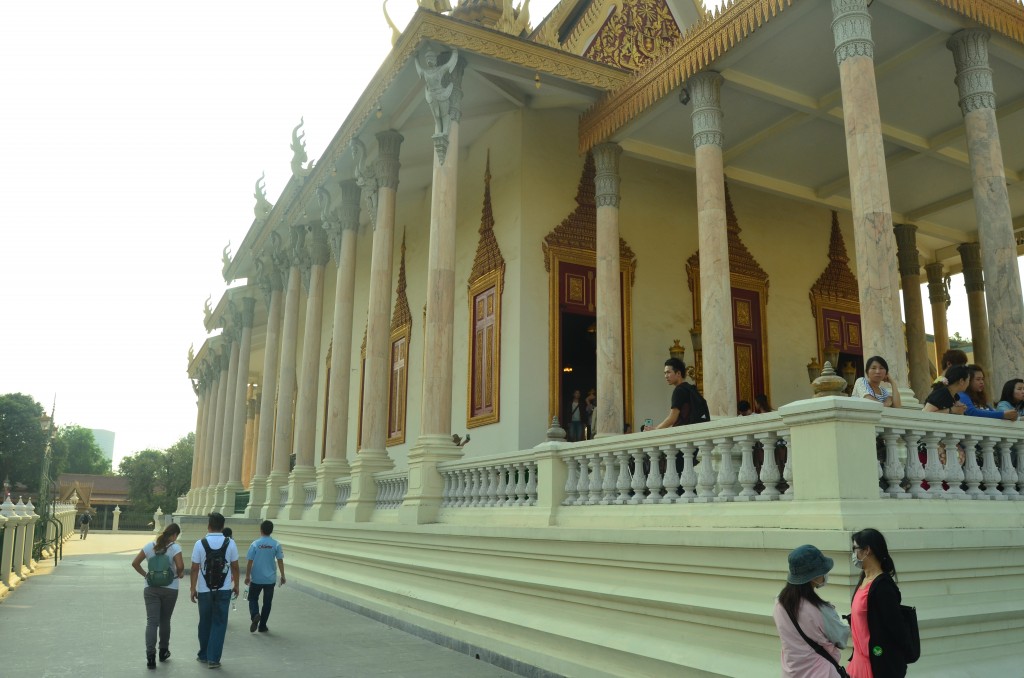
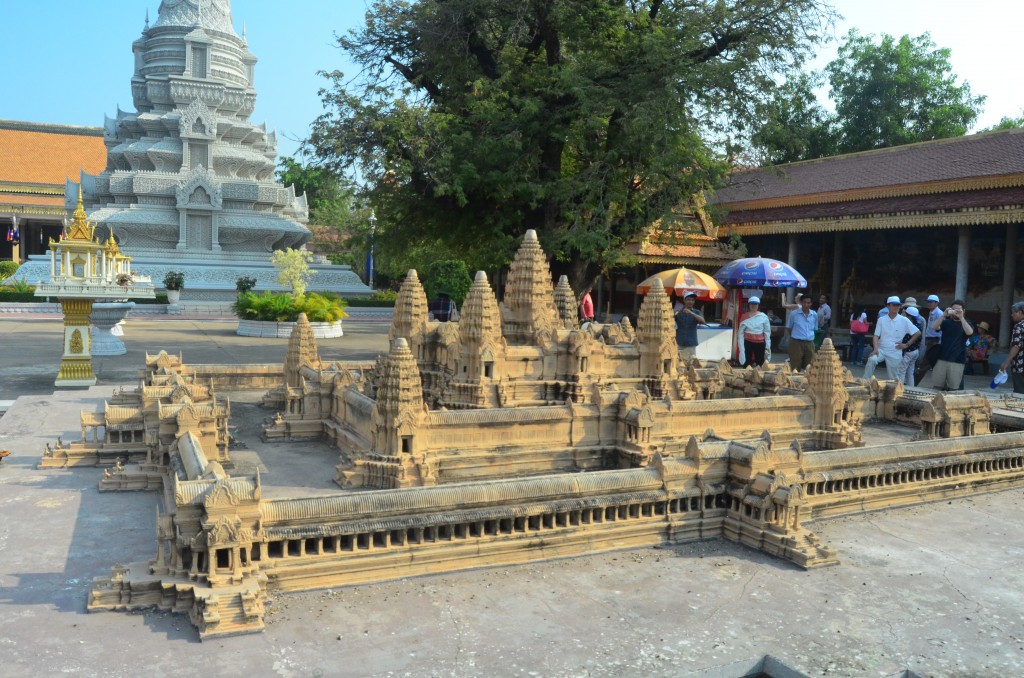
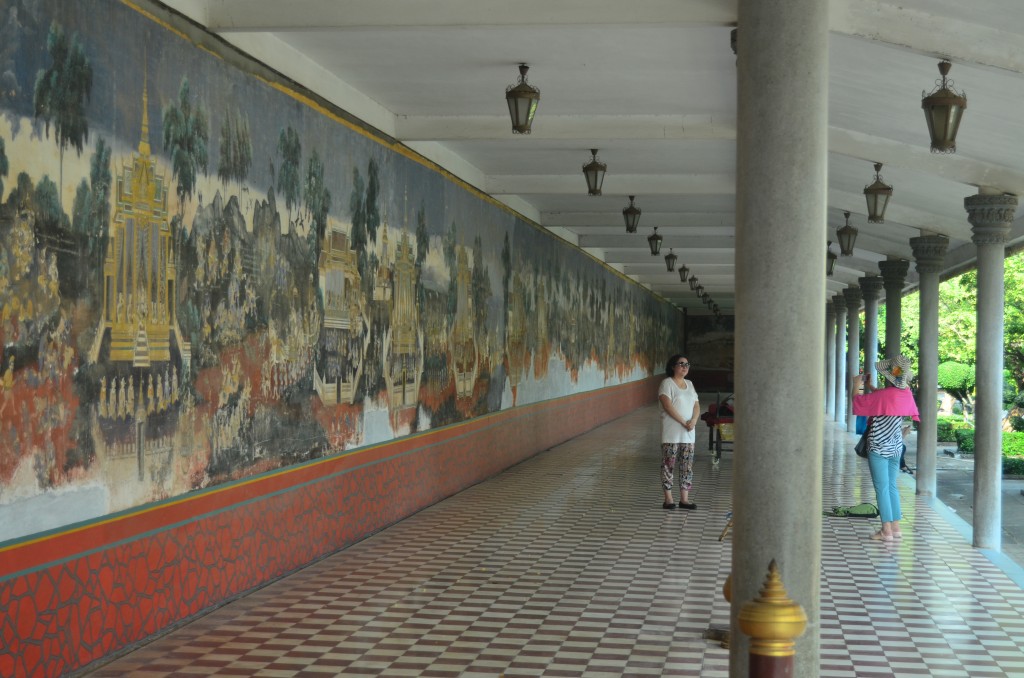
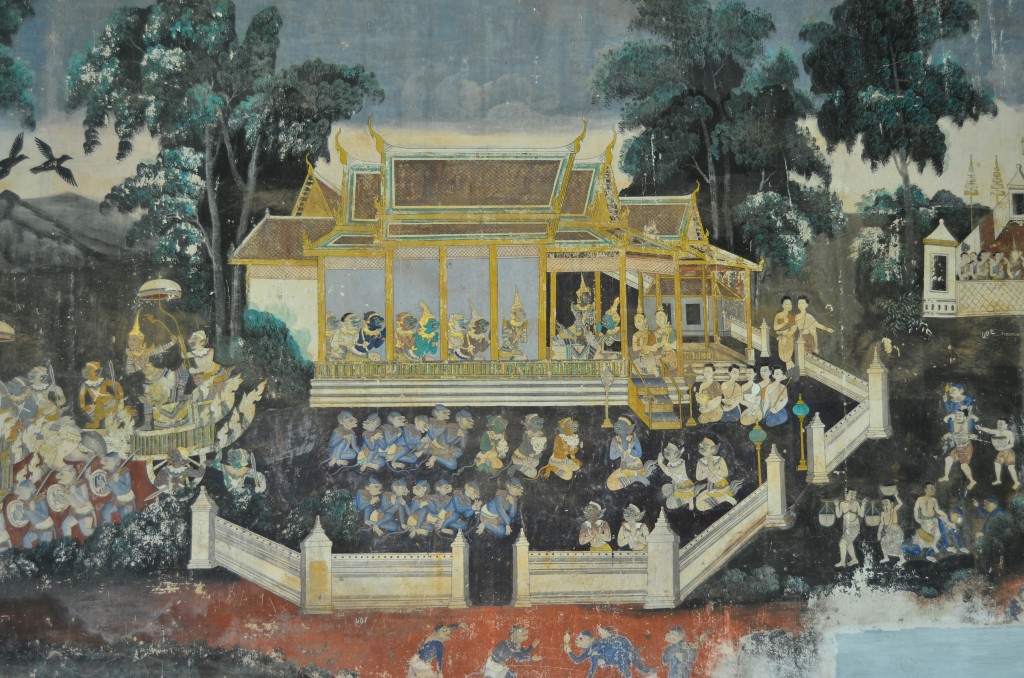
We had high expectations for Phnom Penh and ended up having a slightly hard time of it. Marisa was sick, it was blazing hot, and the city was in rougher shape than we thought it would be. It was still fun walking around and seeing the sights. Asian cities, no matter the shape they’re in, have a very different energy than Western cities, and I’ll always appreciate the opportunities we’ve had to enjoy them.
One thing that I couldn’t help but notice was the amount of construction that is happening in Phnom Penh. Every other block seems to have either a brand new tower of glass, steel, and concrete, or it has a giant pit where construction has been started. I found some articles about the amount of construction happening in the city but there aren’t many details. There are rumors of no-bid contracts and irresponsible development (environmentally and socially unfriendly). This isn’t surprising in a place like Cambodia that has been struggling to rebuild for a couple decades now. Hopefully the ultimate consequences for the city’s less fortunate and the region’s environment aren’t too extreme.
In closing, here are some pics from around the city, starting off with a video from a tuk tuk ride. Next up is Angkor Wat!
